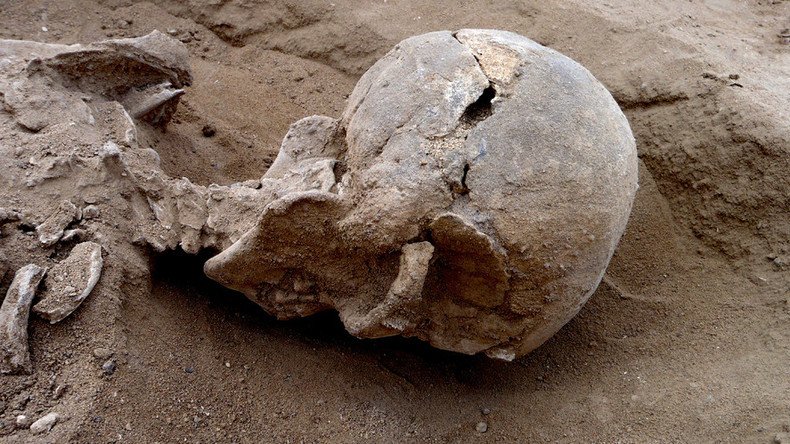Stone Age cold case: ‘Oldest evidence of war’ dates back 10,000yrs

A group of 27 nomadic tribespeople, including eight women and six children, were brutally murdered by a rival tribe some 10,000 years ago in what is believed to be the first case of human warfare, according to a new study.
“These human remains record the intentional killing of a small band of foragers with no deliberate burial, and provide unique evidence that warfare was part of the repertoire of inter-group relations among some prehistoric hunter-gatherers,” said Dr. Marta Mirazon Lahr, of Cambridge University's Leverhulme Centre for the Study of Human Evolution (LCHES), who was in charge of the study published in Nature magazine on Wednesday.
The researchers placed the time of the killing at between 9,500 and 10,500 years ago by using a radiocarbon dating technique, and by examining the samples of the substances found around the skeletons.
The massacre took place in a now-dry lagoon in the Kenyan city of Nataruk, roughly 20 miles (30km) west of Lake Turkana, where the remains were discovered back in 2012. The ancient humans are said to have suffered multiple lethal injuries from stone blades, arrows and clubs. They had their skulls smashed, facial and cheek bones fractured, and hands, knees and ribs broken. Two men even displayed signs of arrow tips still stuck in their skulls and chests. Due to the huge damage sustained, only 12 of the skeletons were in relatively good condition.
One of the victims of the carnage appeared to be a heavily-pregnant woman, whose fractured knees, sticking out from the soil, led scientists to the discovery.
"It is a brutal, physical, lethal attack with the intention to kill those individuals who could put up a defense or mount a counter-attack, or who perhaps were of no use to them, whether it was a man or a very pregnant woman, too young or too old," Mirazon Lahr said.
The reason behind the bloodshed was supposedly the fight for territory, as 10,000 years ago the lagoon was a picturesque place abundant with food and water resources.
"The Nataruk massacre may have resulted from an attempt to seize resources - territory, women, children, food stored in pots - whose value was similar to those of later food-producing agricultural societies, among whom violent attacks on settlements became part of life," Mirazon Lahr said in a statement. The Nataruk fossils "raise the question of whether warfare has been part of the human experience for much longer than previously thought," she added.
Mysterious ‘Denisova’ humans possibly inhabited Siberian cave 110,000 years ago
http://t.co/YJpHhchlngpic.twitter.com/jEjM90UfPs
— RT (@RT_com) 19 сентября 2015However, it is not the first time researchers have stumbled upon proof that war has been always a part of human life. A site known as “Cemetery 117” was discovered in 1964 by a team led by Fred Wendorf in Sudan. It contained 59 skeletons, many of which bore the tips of arrows and spears in their bodies. Researchers attribute the time of that ‘battle’ to about 13,000 years ago, although this evidence is questionable.
However, the latest discovery is still unique, as the remains from Nataruk were well preserved by the conditions of the lagoon, allowing for thorough research to be carried out.















